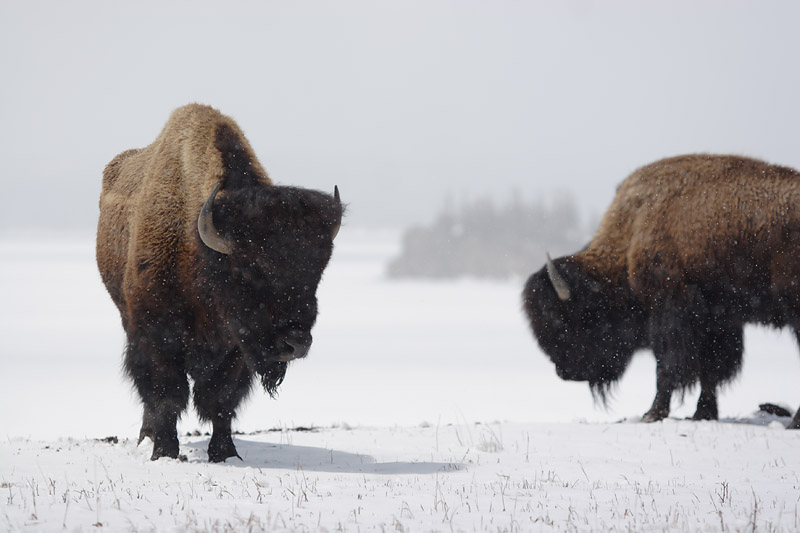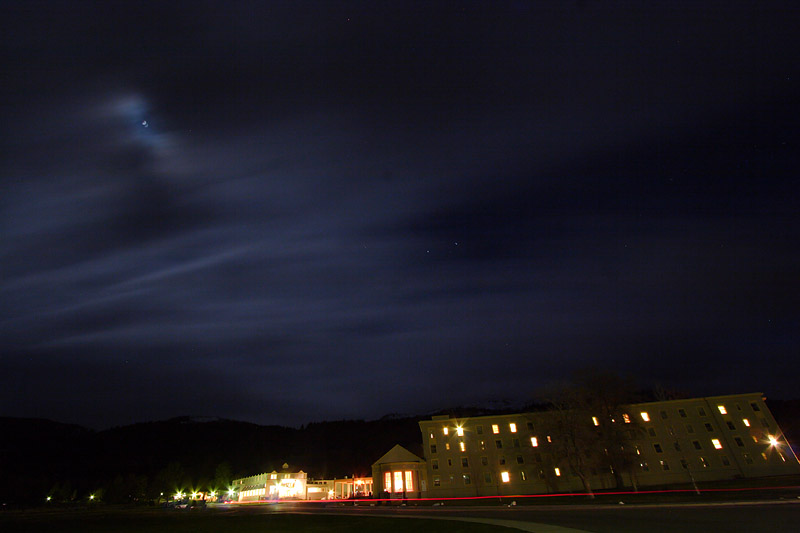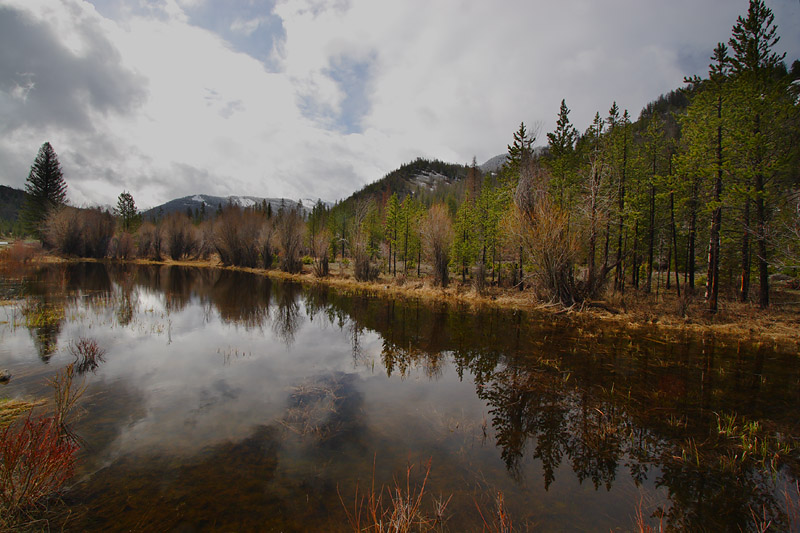|
|

Monday, May 12, 2008 (Mammoth Hot Springs)
It's snowing at 5:30 a.m. - big, fluffy flakes coat cars and porch railings and grass. The east entrance road is closed.
The ranger doesn't know if or when the road will be open as all the roads in the Park are closed except for the road from Mammoth to Cooke City.

Driving towards Cody, the snow switches to rain and back to snow and back again. A herd of elk stares at us from a hillside, then charges up the slope. Mule deer cross the road, one standing on the yellow line, making its way leisurely to the other side. The Shoshone River rushes past us, white caps tumbling over rocks. Even in the gray weather, this place is beautiful. It is the Park outside the Park. Muted gold against green remind me of early fall. In the darkness of the rainy morning, an animal that looks like a large cat slinks across the highway and up the bench. It has a short tail and thick body, short legs and pointed ears. Bobcat. Tim climbs the bench to look for it. The bobcat disappears into a field of grass and sage and cactus. We don't find it, though we're sure that's what it was.
It's raining steadily when we turn west towards the Park.
The sun comes out slowly and the rain lets up. About a mile past the lodge a grizzly steps out into the road from the river's side and crosses into the trees on the other side.
 Our eyes follow him up the slope, the bear climbing steadily, not turning around once to look at us.
Our eyes follow him up the slope, the bear climbing steadily, not turning around once to look at us.
We finally get into the Park at 11:34 a.m. The roads are not as bad as we expected, but the temperature drops to 27 degrees and climbs slowly to 33 by the time we reach Sedge Bay. This would be a perfect winter day - the sun is out and the sky is blue with white, fluffy clouds. It's almost better than being here in winter, because from November to May the roads here are closed. At Mary Bay we see our first coyote post-holing through the deep snow. How winter affects the animals becomes more and more obvious. The snow is so deep it requires a great deal of effort for even large animals to negotiate and in harsh conditions all must conserve calories and energy in order to survive.
Near Fishing Bridge another coyote, small and light colored, slowly approaches a car with a small, curly-haired white poodle barking and whining out the window. The coyote seems confused and curious. He walks away from the car and then around towards the passenger side, as if he doesn't understand what that creature is, while the little dog yaps away.

Lake Yellowstone is a mass of shining white, glistening in the sun. The snow is piled high around the lake cabins and fences and most of the area surrounding the hotel is closed to hiking, marked by rectangular signs warning of bear activity. Hayden Valley is silent. There are a few bison foraging in the deep snow and a pair of great blue herons at Alum Creek. A trail of wolf tracks winds through the snow and loops back to the road then disappears. No Mollies today. No wolves today.
At Norris Junction we turn toward Gibbon Meadow. Nothing there so we continue to Mammoth where we are staying. Past the hoodoos we stop to watch a cinnamon phase black bear high on a hillside. It forages through the grass, then lies down with its head between its paws like a dog. In the scope we can see its foot pads and claws.
Tonight we learned from a ranger that the road from Canyon to Fishing Bridge was closed. A sink hole (which we drove over) needs to be repaired and will take about 3 days.
Author - Christine Baleshta
Photography - Tim Springer
 |
Click for larger image
|
|

